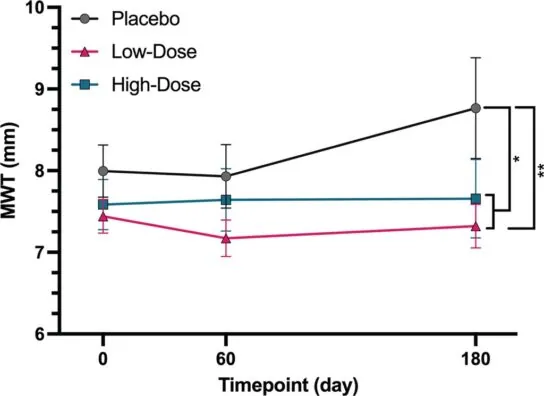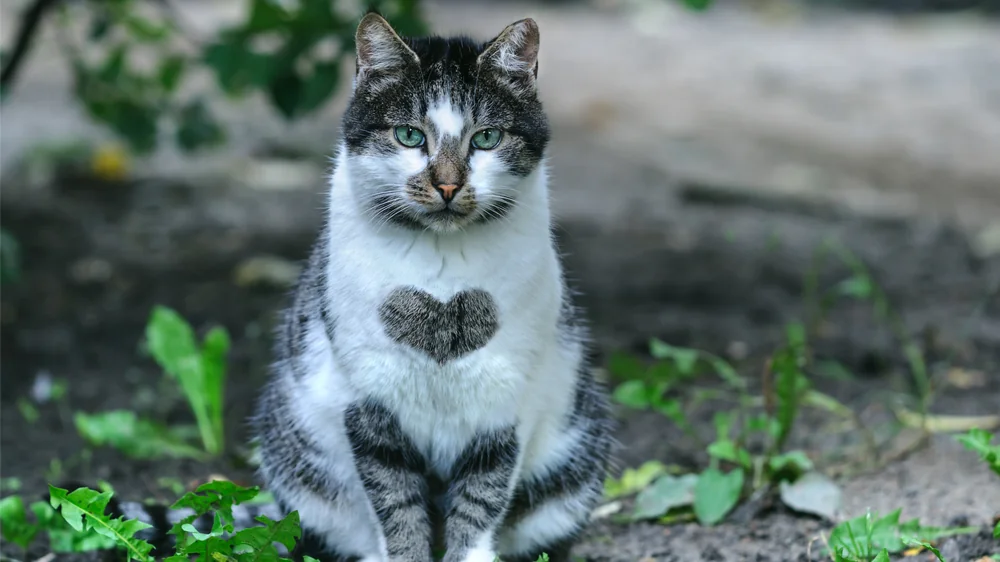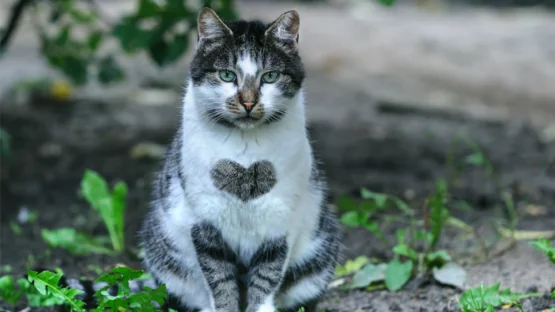Researchers publishing in Journal of the American Veterinary Medical Association have conducted a feline clinical trial finding that rapamycin is effective against heart enlargement in cats.
A well-known drug for a well-known problem
Rapamycin, also known as sirolimus, is one of the most well-known and commonly taken compounds for longevity. The key metabolic factor it inhibits, the mechanistic target of rapamycin (mTOR), has two protein complexes, mTORC1 and mTORC2, both of which have substantial downstream effects, including in the cardiovascular system [1]. In this and other organs, inhibiting mTORC1 has positive effects, while inhibiting mTORC2 has negative ones. However, rapamycin affects mTORC1 much more acutely and mTORC2 only over the long term, meaning that intermittent dosing can be an effective strategy [2].
Hypertrophic cardiomyopathy (HCM), the unhealthy enlargement of the walls of the heart, affects approximately 15% of domestic cats and is often found not to have any clear cause [3]. This disease is largely untreatable by downstream therapies and, just like in people, it often leads to heart failure and death. As rapamycin was found to be effective in a mouse model of cardiac hypertrophy [4] and another study found it to improve the hearts of dogs [5], these researchers decided to see if it was effective in cats as well.
Conducted like a human clinical trial
As this study was conducted on companion animals recruited from the general population, it was conducted much like a human trial. This study was fully blinded, and the owners signed informed consent forms. One-third of the enrolled cats received placebo, one-third received low-dose delayed-release rapamycin (0.3 mg/kg), and the last third received high-dose delayed-release rapamycin (0.6 mg/kg).
Attempting to treat HCM before it became a problem, this study focused on subclinical HCM with no other diagnoses; cats with severe health problems were excluded from the study, as were cats over the age of 12 (in human years, approximately retirement age). These cats were 6 years old, with a wide variety of ages. 53 cats were screened, and 36 of them finished this 180-day trial.
While a substantial number of adverse events appeared in this study, they applied to all three groups mostly equally. Although one cat in the high-dose group died of diabetic ketoacidosis, rapamycin was not found to be a statistically significant cause of any adverse event. Rapamycin was also not found to cause changes in body weight, heart rate, systolic blood pressure, quality of life, or biochemical measurements.
Not all of these groups started with the same maximal wall thickness (MWT). The placebo group, on average, had thicker walls than the treatment groups. After 60 days, these groups did not change much, with the low-dose group slightly thinning their walls. However, after 180 days, the placebo group’s walls thickened substantially, which did not occur in either of the rapamycin groups.

The researchers also found a biomarker for the development of feline HCM. Cats with more N-terminal pro-B-type natriuretic peptide (NTproBNP) at baseline were substantially more likely to develop thicker walls. Rapamycin seemed to blunt this correlation and reduce NTproBNP, although these differences did not reach the level of statistical significance.
Finding the right dose
With the effects of mTORC1 and mTORC2 in mind, these researchers believe that low-dose delayed-release rapamycin appears to be more effective and potentially safer than its high-dose counterpart, at least in cats suffering from HCM.
This study had some limitations, including the relatively small study groups and the lack of direct measurements of mTORC1 and mTORC2. This study also focused on rapamycin itself rather than rapalogs that only affect mTORC1. The researchers note that further studies would be required to determine if their approach has an appreciable effect on lifespan and on HCM over the long term.
Literature
[1] Sciarretta, S., Forte, M., Frati, G., & Sadoshima, J. (2018). New insights into the role of mTOR signaling in the cardiovascular system. Circulation research, 122(3), 489-505.
[2] Arriola Apelo, S. I., Neuman, J. C., Baar, E. L., Syed, F. A., Cummings, N. E., Brar, H. K., … & Lamming, D. W. (2016). Alternative rapamycin treatment regimens mitigate the impact of rapamycin on glucose homeostasis and the immune system. Aging cell, 15(1), 28-38.
[3] Kittleson, M. D., & Côté, E. (2021). The feline cardiomyopathies: 2. Hypertrophic cardiomyopathy. Journal of feline medicine and surgery, 23(11), 1028-1051.
[4] Shioi, T., McMullen, J. R., Tarnavski, O., Converso, K., Sherwood, M. C., Manning, W. J., & Izumo, S. (2003). Rapamycin attenuates load-induced cardiac hypertrophy in mice. Circulation, 107(12), 1664-1670.
[5] Urfer, S. R., Kaeberlein, T. L., Mailheau, S., Bergman, P. J., Creevy, K. E., Promislow, D. E., & Kaeberlein, M. (2017). A randomized controlled trial to establish effects of short-term rapamycin treatment in 24 middle-aged companion dogs. Geroscience, 39, 117-127.





